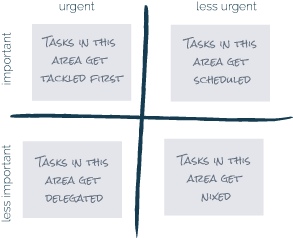You ever feel like you’re getting pushed, then pulled, from one hot project to another?
- a VP sends you an industry article about a hot new trend or a viral video
- a branch needs an urgent sign
- the lending department is nervous about meeting product goals
And these are in addition to your usual projects! A credit union’s marketing department has a never-ending task list – you are always busy! But are you so busy that you’re neglecting strategy and planning?
I get it. I was once where you are – an in-house credit union marketer wondering how I could stop spinning my wheels and start gaining traction on long-term goals. Your credit union needs your strategic input to help weather dynamic financial industry changes and to truly improve the lives of your members and the community.
Your strategic planning and leadership will be the difference it takes to move your credit union into benchmark status, to separate your FI from the crowded marketplace, to create long-term success. But moving from being busy with tiny tasks to creating true impact can be tough. Let’s explore five ways to go from busy tasks to
meaningful activities.
#1 Get A Handle On Your Time
It’s hard to fix a problem without knowing just how deep it goes, so let’s first frame the situation. You’ll then be able to address the overarching issues which take up your time.
Are the meetings you attend beneficial? Can they be shortened? Dealt with via a quick call? How many “urgent” issues are you brought into? Can someone else handle them instead? Do you dread the time suck of checking/answering emails? Do you have time to think and plan?
Recommended Exercise: Time Tracking
Take a week or even 30 days to track what you do during the day. The priority here is to record the time spent during a work day, but it would be beneficial to record your entire day!
No special tools or software needed. It can be as simple as a spreadsheet you leave open all day as you record your activities. If that’s too hard to do during the day itself, at least get the highlights down by recording a voice memo on the way home from work.
Further Reading:
Dorie Clark has a great article about time tracking on Harvard Business Review
#2 Learn To Say “No!”
As you review your activities, how many of those were spurred by requests from other departments? Take a closer look at these internal requests for Marketing’s assistance. Evaluate how much impact each request will have on your credit union’s long-terms goals vs the time and other resources it will consume. When you find requests which aren’t a good return on those resources spent, explain that to the person requesting it.
This may go against your natural tendency to want to help people. The credit union industry is full of kind people who just want to serve! It might feel like you’re being “not nice”. You’ll need to address that discomfort, and you can do so by keeping the big picture in mind. The big picture of having more long-term impact, of reducing stress for you and your team, of moving your credit union forward, of being more creative and innovative.
The first few times you say “no” might feel a bit awkward, just keep your reasonings grounded in data and matched up to long-terms goals. You’ll soon see the number of requests dropping and those which do come in will be more relevant. In these first few conversations, you’ll be teaching the requestors what the parameters are – soon they’ll be applying those parameters to requests before they even get to you.
Recommended Exercise: Eisenhower Matrix
The Eisenhower Matrix provides a chart to evaluate demands on your time. Are the demands urgent and/or important? Placing them in the appropriate quadrants helps you decide how to prioritize it. Just remember that someone’s standard of urgent and/or important does not necessarily make it urgent or important for you. Keep long-terms goals in mind as you evaluate.
Further Reading:
Learn When To Say No at Harvard Business Review

#3 Delegate & Outsource
Reviewing your time track results will likely show you activities which are more implementation-related than strategy-related. These are the perfect activities to delegate and/or outsource!
I can hear you now: “It’s just faster/better if I do it myself”. I used to say the same thing when I was in-house! So many tasks and requests are small enough that we don’t want to bother with sending the task on to someone else, whether that person is in your department or a vendor/freelancer.
But we gotta work through those excuses and challenges. The more time we invest in bringing in someone to help, the more we can then offload to them. Sure, it might take a little bit of time to get the person trained on what you expect, but the long-term pros outweigh the short-term cons. Once they understand your expectations, culture, brand, etc. they can quickly start working on tasks with just the slightest bit of info from you.
Are you still hesitant to delegate and outsource? Is that masking your reluctance to relinquish some control? Doing the tasks yourself may be feeding your ego – there’s no doubt it feels good to see a tangible thing you created or an event you networked – but if you’re serious about making a long-term impact to your organization and in your career, it might be time to take a closer look at the reasons you have a hard time delegating and outsourcing.
Recommended Exercise: Is it worth your time?
Using your current salary, figure a rough hourly rate. Then go through your time tracking journal and figure how much you ‘spent’ on each task. For instance, someone’s salary might be $75,000 a year. Divide that by the 2,087 average working hours there are in a year to get about $36 an hour. So the two hours one might’ve spent on website edits cost your organization $72. A marketing staffer might make $20 an hour. If they took two hours to do the same task, it would cost the organization only $40.
Further Reading:
This Harvard Business Review article lists studies showing delegation is a key to successful companies and includes tips for how to do so.
#4 Align Your Time
When’s the last time you reviewed your position’s roles and responsibilities within your credit union? For instance, those who sit at the AVP or VP level are expected to be contributing to the strategic and long-term aspects of the credit union. Is that where you’re spending the bulk of your time? Or are you staying busy fighting fires which may not have any impact on the long-term success? If you don’t spend time researching, planning, and strategizing, who will? Align your time.
And if you really want to take this up a notch, what activities can you do to make your boss’ job easier? If you provide support for their roles and responsibilities, think how much farther your organization can move forward? This type of time spent seems to be much more valuable than helping a branch craft signage for a coin shortage or some other short-term, low-impact issue.
Recommended Exercise: Responsibilities Review
Get with Human Resources to review your position’s job descriptions and your direct supervisor’s position too! Even if they can’t or won’t share your boss’ entire job description, ask them for the overarching goals and/or responsibilities. Let them know your own goal of wanting to be more effective in your position and have more impact to the organization. That will help them get a feel for your motives in asking.
Used to being really busy with a task-driven to-do list? The shift to spending more time thinking can feel like you’re not doing anything productive. It might feel or look like you’re doing ‘nothing,’ but your brain is in overdrive!
#5 Value The Art of Doing Nothing
Strategic planning requires dedicated time to work through various scenarios for long-term situations. Where is the organization going? What 5- or 10-year goals have been discussed? How can you and your group contribute to those goals today, next month, next year? Being busy with short-term tasks deprives these long-term goals of your attention. Give them the thinking time, the ‘do nothing’ time, they deserve.
Recommended Exercise: Schedule time to do nothing, then do nothing
Block off time in your calendar to do nothing. Start with fifteen minutes a day. Stay off the phone, computer, tablet, any electronic device. Have a pen and paper handy to doodle or write notes. Or take a walk by yourself with no music, podcast or other diversion. The goal is to let your mind wander. Maybe select a goal, a topic or a specific challenge you’re facing to ponder during this time, but really give your brain the space and freedom to play and explore.
Further Reading:
Being Bored is Key to Being More Creative
The Importance of Doing Nothing
Use these tips to boost your impact while reducing stress frorm busy-work. And if you’d like help working through some of these shifts in thinking and doing, give me a call (256-714-6596) or send an email!

